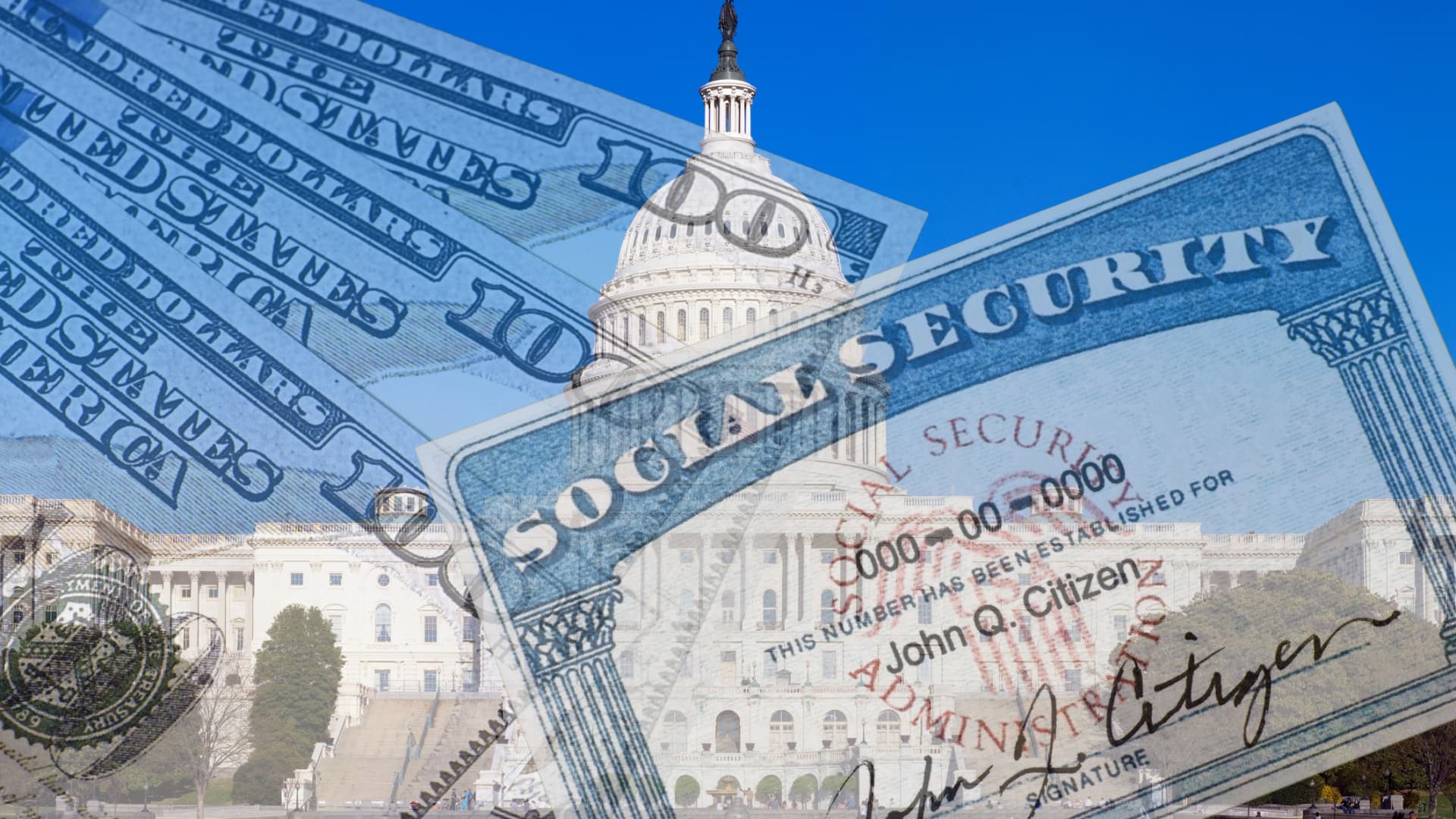President Donald Trump‘s proposal for a new savings account for children with a one-time deposit of $1,000 from the federal government just got an important stamp of approval.
At the “Invest America” roundtable at the White House this week, several top CEOs, including Michael Dell and Goldman Sachs chief David Solomon, expressed support for “Trump Accounts,” which are part of the landmark Republican-backed “big beautiful bill” moving through Congress. The executives committed to contributing to the accounts of their employees’ children, and, in Dell’s case, matching the government’s seed money “dollar for dollar.”
Still, policy experts and financial advisors question whether the provision is the most effective way to save on behalf of your child.
How ‘Trump Accounts’ would work
Under the House measure, Trump Accounts — previously known as “Money Accounts for Growth and Advancement” or “MAGA Accounts” — can later be used for education expenses or credentials, the down payment on a first home or as capital to start a small business. Earnings grow tax-deferred, and qualified withdrawals are taxed at the long-term capital-gains rate.
More from Personal Finance:
Trump’s ‘big beautiful’ bill could curb low-income tax credit
What a ‘revenge tax’ in Trump’s spending bill means for investors
What’s happening with unemployed Americans — in 5 charts
Trump’s massive tax and spending bill still faces a battle in the Senate, but if it passes as drafted, parents and others will be able to contribute up to $5,000 a year to a child’s Trump Account. The balance would be invested in a diversified fund that tracks a U.S.-stock index.
Sen. Ted Cruz, R-Texas, who spearheaded the effort, told CNBC in May that the accounts give children “the ability to accumulate wealth, which is transformational.”
“This will afford a generation of children the chance to experience the miracle of compounded growth and set them on a course for prosperity from the very beginning,” the White House also said in a statement Monday.
Biggest Trump Account benefit: $1,000 bonus
Armand Burger | E+ | Getty Images
Some experts say the biggest benefit of Trump Accounts is the seed money for all children born between Jan. 1, 2025, and Jan. 1, 2029, funded by the Department of the Treasury.
There are no income requirements. To be eligible, the child must be a U.S. citizen and both parents must have Social Security numbers.
Although some states, including Connecticut and Colorado, already offer a type of “baby bonds” program for parents, Trump Accounts — along with a bigger child tax credit proposed in the budget bill and potential employer-sponsored matching funds — “could certainly help a lot of families at a lot of different income levels,” Sam Taube, NerdWallet’s lead investing writer, recently told CNBC.
Invested in a broad equity index fund for 20 years, a $1,000 government grant for newborns could grow to an average $8,000, according to a March report from the Milken Institute. “If the policy also permitted a tax-deductible match by employers of the children’s parents, such initial matches would double an account’s value,” researchers wrote.
Trump Accounts are expensive, ‘needlessly complex’
Depositing $1,000 into an account “is a good idea, but with a critically important caveat,” said Mark Higgins, senior vice president at Index Fund Advisors and author of “Investing in U.S. Financial History: Understanding the Past to Forecast the Future.”
With Trump Accounts, “the costs are the key,” he said: “If it keeps adding to the deficit, it is not sustainable.” (By some accounts, the program could cost more than $3 billion a year.)
“The biggest challenge for this country right now is that we have lived beyond our means,” he said. “Over the last 230 years, Congress has passed countless programs like this, which provide short-term benefits that are almost invariably dwarfed by the long-term costs.”
Universal savings accounts, which allow for more flexibility, would be a better proposal than the House provision, said Adam Michel, director of tax policy studies at the Cato Institute, a public policy think tank.
Universal savings accounts have had bipartisan support going back as far as the Clinton administration, and without the initial deposit, would come a much lower cost. They have also been successfully implemented in other countries, including Canada and the United Kingdom, according to the Tax Foundation.
Further, Trump Accounts are “overly restricted and needlessly complex,” Michel said. “A simpler system is a better way to get people to save.”
With a universal savings account, individuals could contribute up to $10,000 of after-tax income a year and withdraw the funds tax-free at any time for any purpose, according to Michel.
“It’s the flexibility that entices people,” he said. “Maybe you want to use that money to start or expand a business or buy a house or an investment property — let people choose what’s best for their lives.”
‘The 529 college savings plan is superior’
Another alternative is a tapping 529 college savings plan, which nearly every state offers.
These 529 plans have much higher contribution limits, earnings grow on a tax-advantaged basis, and when a child withdraws the money, it is tax-free if the funds are used for qualified education expenses. This year, individuals can gift up to $19,000 to a 529, or up to $38,000 if you’re married and file taxes jointly, per child without those contributions counting toward your lifetime gift tax exemption.
Although there are more limitations on what 529 funds can be applied to compared to Trump Accounts, restrictions have loosened in recent years to include continuing education classes, apprenticeship programs and student loan payments.
“For most parents, like myself with teens, the 529 college savings plan is superior if you’re focused on paying for higher education because of the federal tax-free growth,” Winnie Sun, co-founder and managing director of Sun Group Wealth Partners, based in Irvine, California, recently told CNBC.
“Also, now, the 529 is becoming more flexible with its’ ability to have unused funds rolled into a Roth IRA in the future for retirement,” said Sun, a member of CNBC’s Financial Advisor Council.
As of 2024, families can roll over unused 529 funds to the account beneficiary’s Roth individual retirement account, without triggering income taxes or penalties, so long as they meet certain requirements.
Subscribe to CNBC on YouTube.


 Personal Finance1 week ago
Personal Finance1 week ago
 Economics1 week ago
Economics1 week ago
 Economics6 days ago
Economics6 days ago
 Economics1 week ago
Economics1 week ago
 Economics6 days ago
Economics6 days ago
 Economics6 days ago
Economics6 days ago
 Economics4 days ago
Economics4 days ago
 Finance6 days ago
Finance6 days ago













